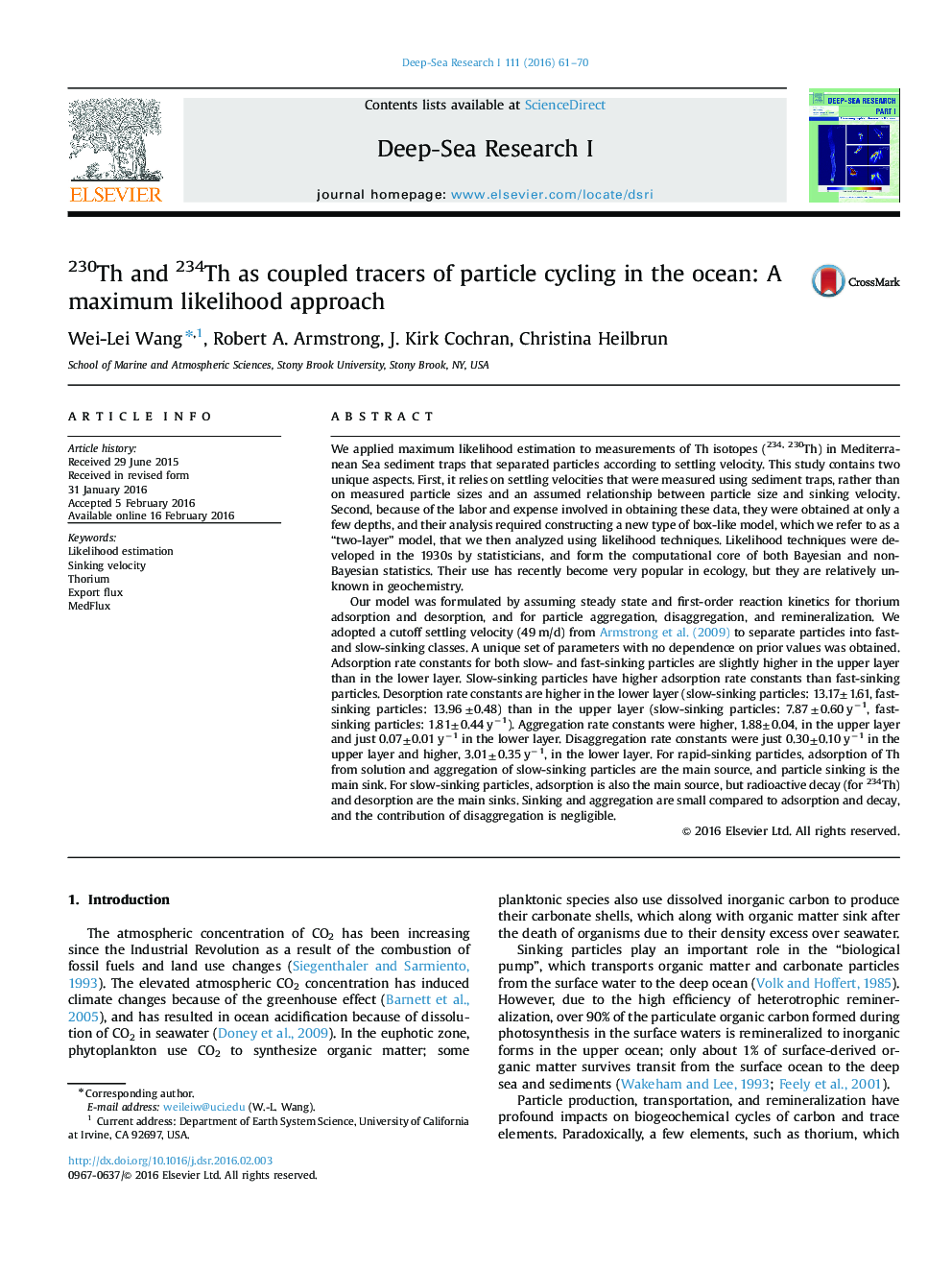| کد مقاله | کد نشریه | سال انتشار | مقاله انگلیسی | نسخه تمام متن |
|---|---|---|---|---|
| 4534438 | 1626319 | 2016 | 10 صفحه PDF | دانلود رایگان |

• Thorium and particle data measured using settling velocity sediment traps were used in this study.
• A “two-layer” model was built to describe thorium particle interactions.
• Maximum likelihood method was applied to estimate particle thorium reaction rate constants.
• Source and sink terms for 234Th and 230Th were clearly defined.
We applied maximum likelihood estimation to measurements of Th isotopes (234,230Th) in Mediterranean Sea sediment traps that separated particles according to settling velocity. This study contains two unique aspects. First, it relies on settling velocities that were measured using sediment traps, rather than on measured particle sizes and an assumed relationship between particle size and sinking velocity. Second, because of the labor and expense involved in obtaining these data, they were obtained at only a few depths, and their analysis required constructing a new type of box-like model, which we refer to as a “two-layer” model, that we then analyzed using likelihood techniques. Likelihood techniques were developed in the 1930s by statisticians, and form the computational core of both Bayesian and non-Bayesian statistics. Their use has recently become very popular in ecology, but they are relatively unknown in geochemistry.Our model was formulated by assuming steady state and first-order reaction kinetics for thorium adsorption and desorption, and for particle aggregation, disaggregation, and remineralization. We adopted a cutoff settling velocity (49 m/d) from Armstrong et al. (2009) to separate particles into fast- and slow-sinking classes. A unique set of parameters with no dependence on prior values was obtained. Adsorption rate constants for both slow- and fast-sinking particles are slightly higher in the upper layer than in the lower layer. Slow-sinking particles have higher adsorption rate constants than fast-sinking particles. Desorption rate constants are higher in the lower layer (slow-sinking particles: 13.17±±1.61, fast-sinking particles: 13.96±±0.48) than in the upper layer (slow-sinking particles: 7.87±±0.60 y−1, fast-sinking particles: 1.81±±0.44 y−1). Aggregation rate constants were higher, 1.88±±0.04, in the upper layer and just 0.07±±0.01 y−1 in the lower layer. Disaggregation rate constants were just 0.30±±0.10 y−1 in the upper layer and higher, 3.01±±0.35 y−1, in the lower layer. For rapid-sinking particles, adsorption of Th from solution and aggregation of slow-sinking particles are the main source, and particle sinking is the main sink. For slow-sinking particles, adsorption is also the main source, but radioactive decay (for 234Th) and desorption are the main sinks. Sinking and aggregation are small compared to adsorption and decay, and the contribution of disaggregation is negligible.
Journal: Deep Sea Research Part I: Oceanographic Research Papers - Volume 111, May 2016, Pages 61–70